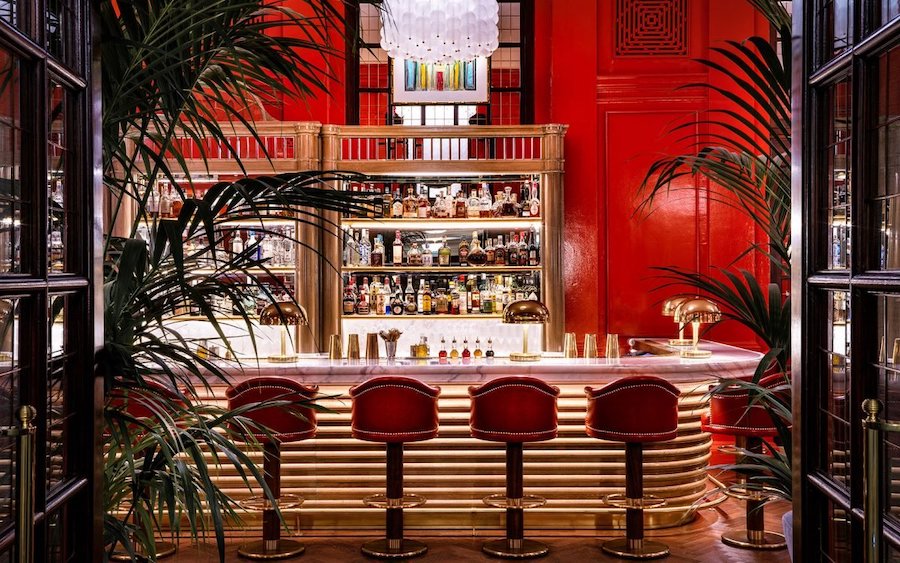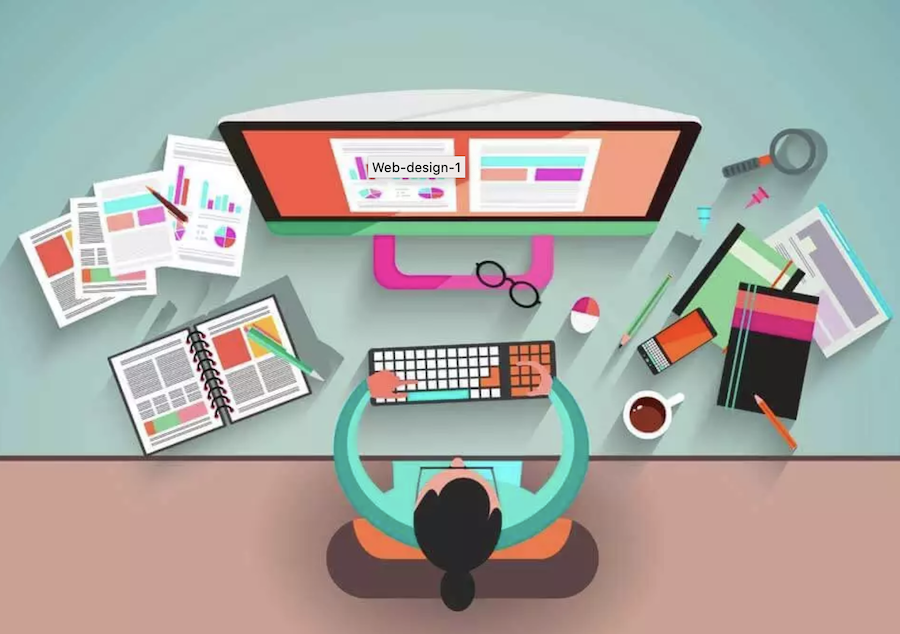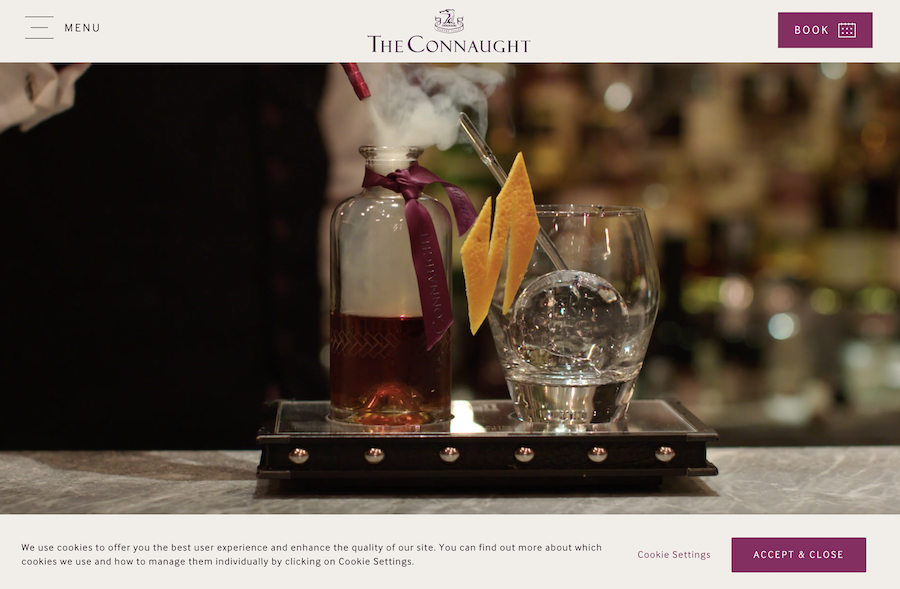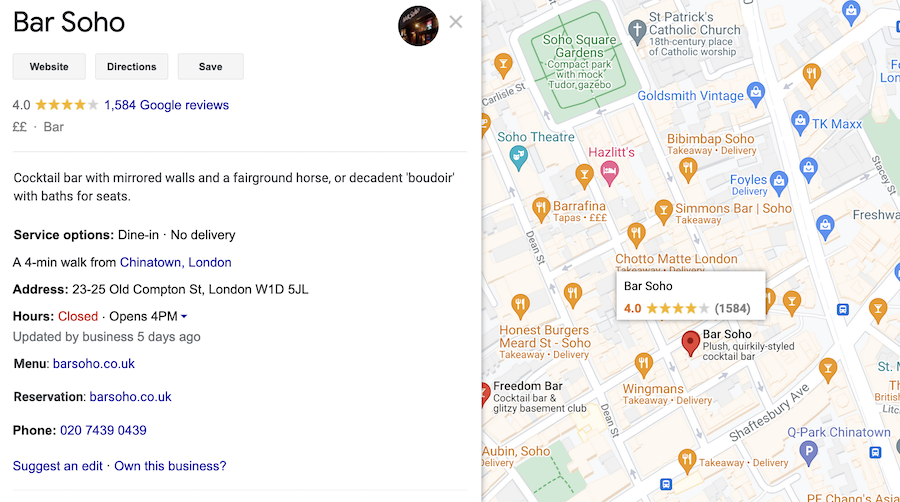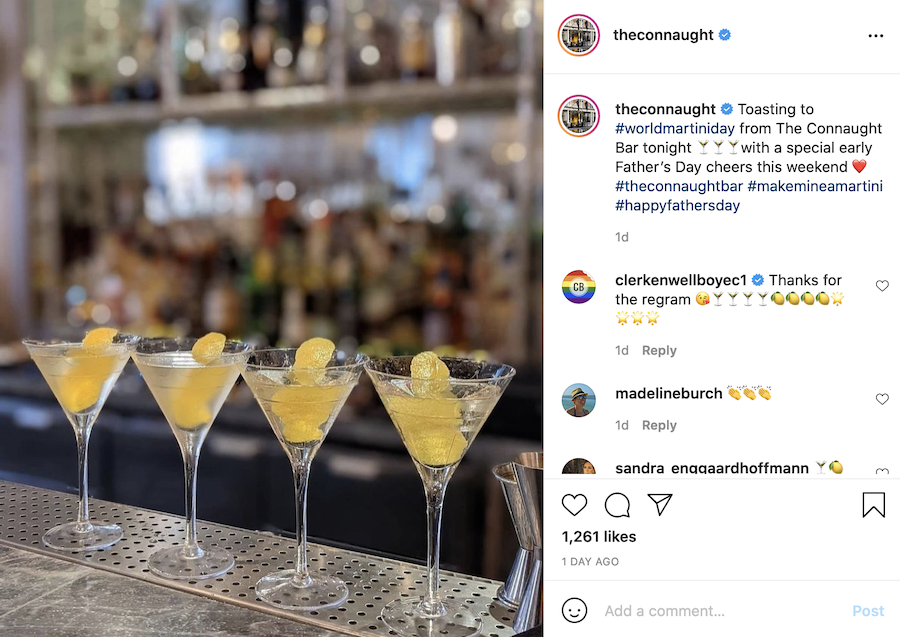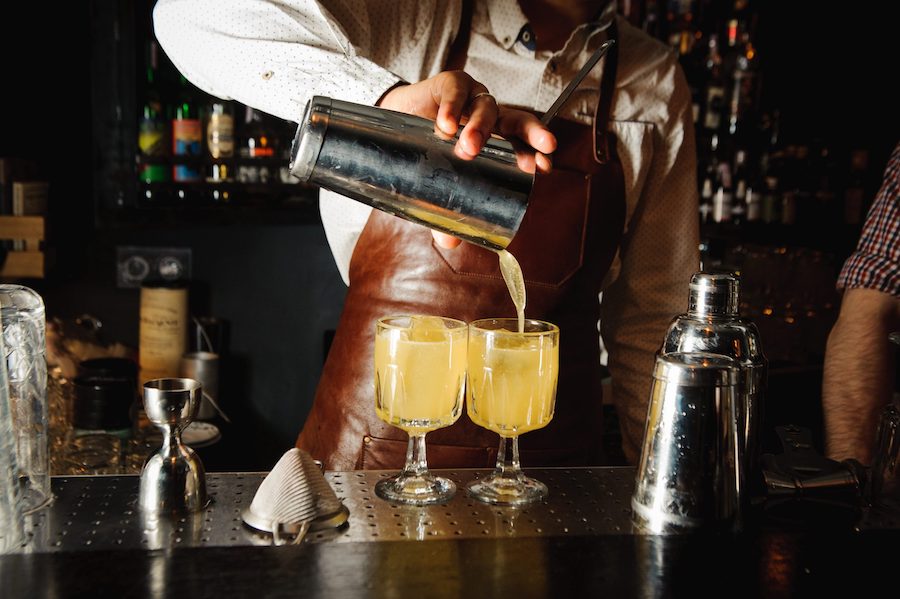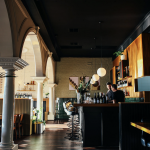Bar Website – How to Create an Incredible Website for a Bar
Having a killer bar website is vital if you want to convert traffic to actual spenders buying drinks in your bar.
A few years ago, bars were the sort of small business establishments that did not need too much of an online presence, if any, to thrive.
With a laid-back and comfortable ambiance that is perfect for hanging out with friends on the weekends or relaxing with office buddies after a long grilling day at work, local bars did not require the ‘big guns’ of publicity.
Most of them survived through word-to-mouth chatter, a well-lit sign out front, and quality alone.
However, the alcohol and food service industry has steadily been growing for a while now.
The number of businesses entering the market won’t be declining anytime soon. This means two things- the competition is fierce and traditional marketing won’t cut it anymore.
The internet constitutes a large part of people’s life, offering its services to find the closest restaurant or popular hotspots in town.
Almost seventy-seven percent of diners check a restaurant or pub’s website and ratings before they head down to eat and drink.
This makes it obvious that building an online presence is not just an option but a prerequisite of owning a successful bar.
Creating an attractive website requires time and carefully thought-out decisions.
On the flip side, bars project comfort with their drinks, food, and entertainment, naturally attracting people into their doors.
With a little effort put into creating a good bar website, your business will be ready to serve.
Here’s what you need to know to create an incredible website for your bar. You can jump to the section you want to read about:
1. The actual website
2. Elements of the website
3. Provide information
4. Be true to your brand
5. Connect to social media
6. Keep your website up and running
7. Get business online
8. Try blogging
9. Advertising
10. User experience (UX) design
1. The actual website
Before even thinking about the different elements, information, and design template, you need to choose the right hosting platform.
Several platforms provide services for building your personalized website without you needing any technical knowledge.
This hosting software, like Squarespace, Wix, and WordPress, are simple to use and usually follow a click-to-choose process. Alternatively, you could build your website from scratch or hire an expert to do it for you.
Once you have decided on a basic skeleton, then you can think of templates, design layouts, placements, and the different elements you want on your web pages.
The navigation and templates are crucial for any website.
These aspects are the first to interact with a visitor and create the general appeal and ease of use for the visitor.
You don’t want to lose potential customers because your website was too slow, or the page wasn’t appealing enough.
A few common function tabs that can be found on almost all business-oriented sites are home pages, contact us, about us, what we offer, and bookings.
2. Elements of the website
When creating your customized website on popular hosting platforms, you will come across several hundred ‘templates.’
When it comes down to the success of your website, the template can say a lot about your business.
Sure, the choices can be overwhelming at times, but choosing a template that suits your business is crucial.
You want your website to be in sync with your brand and business. The template should match the overall ‘mood’ of your bar.
Once you nail down the template, your basic structure is ready.
You have to think of the different elements you want the visitors to see on your site.
Think about the aesthetics, ambiance, and key features of your bar.
What makes your bar special? Why should people come to your business?
To convey all of this to potential customers through your website, you need to use images, videos, and other design elements to convince the people who visit your website.
These elements make long-lasting impressions and are usually the first few things to capture a brief scroll.
They become especially significant when you consider the fact that people spend barely 5 seconds on a web page before deciding whether they like the place or not.
The easiest way to persuade users is through images. The first thing people do when they want to decide on a restaurant or bar is scrolling the photo gallery on their websites.
Capturing the essence of your business in the best light and posting those pictures as the headlines on your website is a pretty good method to catch the visitor’s attention.
You could take professional photos of your bar in action, i.e., while serving satisfied customers enjoying themselves, or the bartenders performing their duties with skill, maybe even pictures of your popular drinks and food.
If you provide live entertainment, including imagery and short clips of performers is also a good idea. Basically, these design elements can help represent your bar as it is.
3. Provide information
This may seem like the most obvious step- providing information on your business.
This includes the bar location, address, email address, phone number of the reception or manager, etc.
Besides the basic details, a bar may also include their opening and closing hours, mark special event days, the menu they serve, description of their performers (if any), etc.
A business website is the most direct approach to inform potential customers about the various features, updates, and contact particulars that would usually appear on a business card or a promotional pamphlet.
Funnily enough, a ton of businesses do not provide all the information.
Other times, they end up providing the wrong details. Suppose as a potential prospect who wants to go to a good bar, you visit a bar website to check out the business.
You scroll through the photo gallery and like what you see. You want to book a table and get the directions. You start searching for the contact details, but it’s not prominently visible.
Once you do get the information, you dial the provided telephone number, but an automated voice tells you the number is out of service. At this point, you’ll get frustrated and give up on that bar.
Continuously updating the relevant information is essential too.
If you change phone numbers, update them on the website. If you open a new location, add that to the website.
Your customers should easily find the essential particulars of your business on the official web page.
These days precautionary methods against COVID-19 and other relevant information are being uploaded to most business sites, including bars.
Including additional details and updates to your website is a great way to increase your reach and let your customers know that you are always evolving to keep up with their demands.
Maybe you decided to add a new cocktail to your list of drinks. You could announce that on your site. A website can double down as a digital bulletin board for potential customers.
4. Be true to your brand
Businesses are all about branding, especially local and small-scaled ones like bars.
The fastest approach to creating a cohesive website is by considering all the different factors and unifying them through your bar’s brand appeal.
What this means is consistently portraying your brand in real-time and what you portray online.
This includes translating menus offline to online, keeping the template the same, the font style the same, and the same tone of voice.
A website acts as the online version of your store, so to say. You want people to experience your brand, through a digital platform, that stays unique to your bar and style.
This can be done by working with a solid web designer that can tie in your brand, template, and elements.
5. Connect to social media
A business website has several advantages besides serving as a means of communication.
One of the biggest roles a bar website can play for your business is advertising.
Creating an online presence for your bar is the chance you have for effective marketing and brand building.
Online presence isn’t just restricted to Facebook or Instagram. A large part of digital branding is connecting to all of these social platforms to your business website.
As a person interested in your bar for a night out, I may check your website and find the different social media handles for your bar.
Following the links, I landed on your Instagram and Facebook account page.
This lets me see all the success you have achieved, several photos, comments, and reviews of past customers, different events hosted at your bar, etc.
I finally then decide that your bar is a fun place and is just what I was looking for. Voila! You have a new customer.
Website content is traditionally more permanent.
You can only post a limited number of photos and videos to a website to garner attention.
Social media, on the other hand, was built to do exactly that. Providing links and account details for your social media platforms is a smart way to attract more customers and traffic.
Conversely, you should include the link to your website on your social media pages.
6. Keep your website up and running
Just like any other car, shop, or object a website requires maintenance too.
Constantly keep your website updated with the latest changes to your bar, checking to see if all functionality is working properly, addressing software problems that hinder the overall performance come under ‘maintaining’ a website.
Other factors like mobile compatibility and loading speed are crucial to running an incredible website.
7. Get business online
Relying on just walk-in orders means staying behind the times.
The most common way to book table reservations or take orders nowadays is through an online portal.
If your bar isn’t shying away from preparing take-out orders, adding the option for customers to try your food from the comfort of their homes may improve your sales number, website traffic, and visibility.
Make your website flexible and include a section that is dedicated to the customers to list themselves for advance table bookings. Provide safe and secure online payment methods.
8. Try blogging
Blogging is a practice that all website owners including businesses have adopted.
Publishing blogs to your website primarily acts as a marketing tactic and can successfully drive organic traffic, increase the digital popularity of your bar, and improve the search engine result page rankings.
Blogs are essential to boost SEO too.
When searching for a product or service, consumers can get easily confused with industry terms, new trends, or the overwhelming options available on the market.
This is true even for bars, food, and drinks. This is probably why users prefer websites that provide additional information about the industry, relevant to their business, maybe an article highlighting new features of service/product, etc.
Blogging plays to that need of customers.
Writing short articles on the latest trends, tricks of the trades, maybe starting a weekly drink-making course can benefit your business and website. This will attract more traffic to your site, which ultimately means increased visibility of your bar.
9. Advertising
The last pillar to creating an incredible website is advertising.
Half the reason businesses put in the time and effort to build an intricate website is to attract more customers. Also, a website cannot be incredible if hardly anyone knows about it.
There are several methods and levels to advertising- you could conduct a small campaign yourself with some research, or you could hire marketers and assistants if you can afford diving into your budgets.
Advertising can start with your website design and content, by assessing the user-friendliness and compatibility of your website to working on blogs and SEO, and finally to paid advertisements, reviews, listings, social media advertising, and the whole shebang.
A simple first step could be adding your website address to your business cards, somewhere inside your bar, and promotional pamphlets.
10. User experience (UX) design
User experience (UX) design is the process of enhancing user satisfaction by improving the usability, accessibility, and pleasure provided in the interaction between the user and the product.
In the context of a bar website, UX design is crucial for attracting and retaining customers.
A well-designed bar website should be easy to navigate, visually appealing, and mobile-friendly. It should load quickly, have clear calls to action, and be easy to read.
The website should also be accessible to people with disabilities, such as those who are visually impaired or have motor impairments.
By prioritizing UX design, you can create a website that is not only functional but also enjoyable to use.
A positive user experience can lead to increased customer satisfaction, loyalty, and word-of-mouth marketing.
Wrapping up
Crafting an exceptional bar website is a multifaceted endeavor that requires meticulous attention to detail.
From the foundational elements like website design and information provision to the strategic integration of social media and digital marketing, every aspect plays a pivotal role in shaping a successful online presence.
By prioritizing user experience, embracing your brand identity, and consistently adapting to evolving digital trends, you can create a website that not only attracts new customers but also fosters lasting loyalty.
Remember, a well-designed website is more than just a digital storefront; it’s a dynamic platform that can elevate your bar to new heights.
